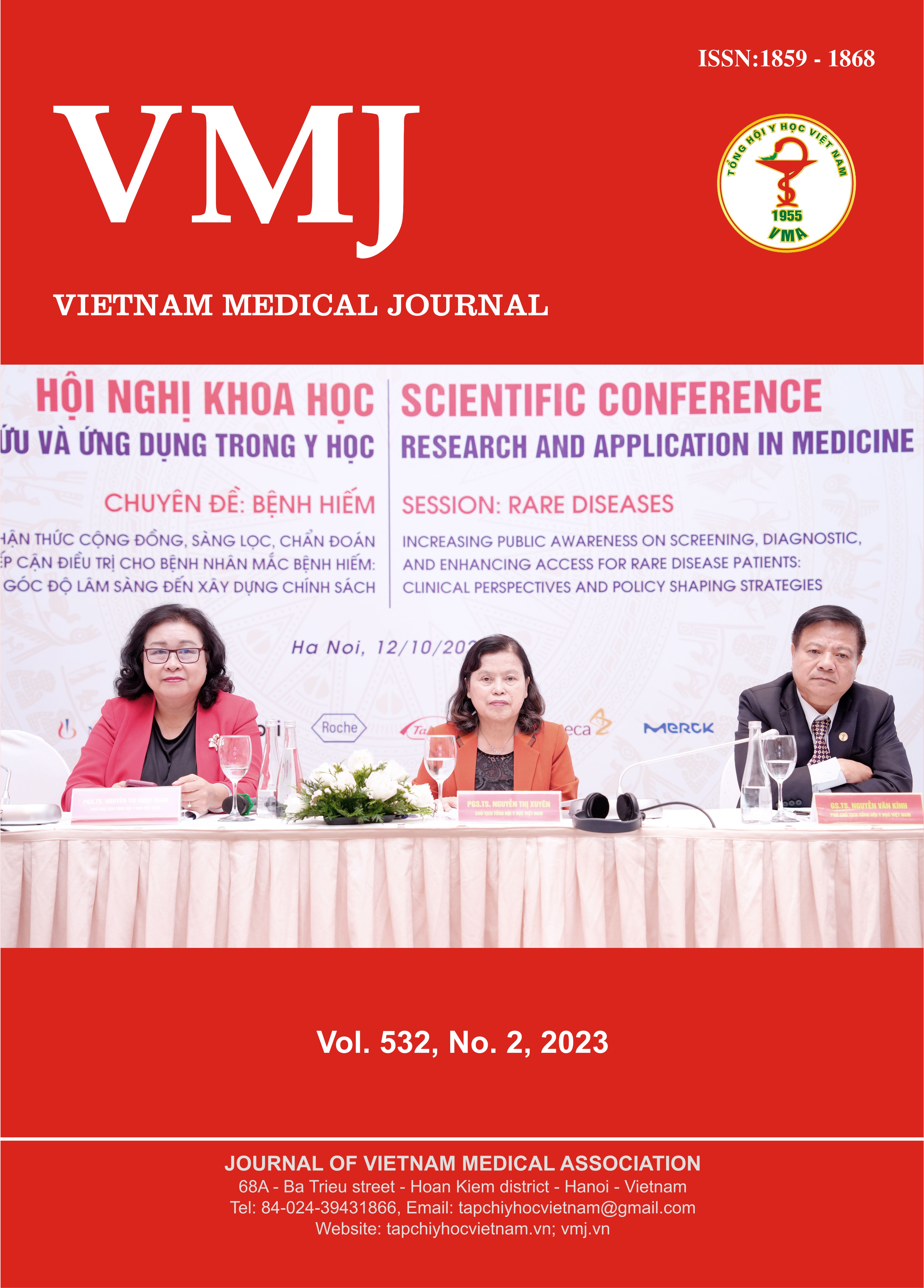CORRELATION BETWEEN 1,5-ANHYDROGLUCITOL LEVELS AND GLYCEMIC VARIABILITY IN TYPE 2 DIABETIC PATIENTS USING CONTINUOUS GLUCOSE MONITORING
Main Article Content
Abstract
Background: The evaluation and control of glycemic variability (GV) has been one of diabetes treatment targets recently. 1,5-anhydroglucitol (1,5-AG) is a test that can be used to evaluate GV. Objectives: 1. To survey the short-term change of 1,5-AG and HbA1c in patients with type 2 diabetes. 2. To assess the correlation between 1,5-AG and GV in patients with type 2 diabetes using continuous glucose monitoring system (CGM). Subjects and Methods: A descriptive cross-sectional study was conducted on 38 patients with type 2 diabetes using a CGM system for 7 days at Cho Ray Hospital. Spearman's rank correlation coefficient was used to determine the correlation between two variables. Non parametric tests were used to find the difference between groups at two time points. Results: The concentration of 1,5-AG after 7 days from the beginning of using the CGM system during inpatient treatment was 5.98 (5.39-7.01) μg/mL, greater than the initial time of 2.91 (2.41 - 4.32) μg/mL, p < 0.001. HbA1c levels after 7 days were similar to the measurements at the beginning of the study, 9.12 ± 1.92% and 9.23 ± 2.07%, respectively, p = 0.08. There was an inverse, moderate, and statistically significant relationship between the concentration of 1,5-AG and CoV of glycemia in 7 days, r was -0.45, p < 0.05. Conclusions: 1,5-AG can be utilized in evaluating glycemic variability and glycemic control in the short term.
Article Details
Keywords
Diabetes mellitus, 1,5-anhydroglucitol, HbA1c, glycemic variability
References
2. Chamberlain J. J., Doyle-Delgado K., Peterson L., Skolnik N. (2019), "Diabetes Technology: Review of the 2019 American Diabetes Association Standards of Medical Care in Diabetes". Ann Intern Med, 171(6), pp. 415-420.
3. Chan, C. L., Pyle L., Kelsey M. M., Newnes L., Baumgartner A., et al. (2017), "Alternate glycemic markers reflect glycemic variability in continuous glucose monitoring in youth with prediabetes and type 2 diabetes". Pediatr Diabetes, 18(7), pp. 629-636.
4. Ohigashi M., Osugi K., Kusunoki Y., Washio K., Matsutani S., et al. (2021), "Association of time in range with hemoglobin A1c, glycated albumin and 1,5-anhydro-d-glucitol". J Diabetes Investig, 12(6), pp. 940-949.
5. Seok H., Huh J. H., Kim H. M., Lee B. W., Kang E. S., et al. (2015), "1,5-anhydroglucitol as a useful marker for assessing short-term glycemic excursions in type 1 diabetes". Diabetes Metab J, 39(2), pp. 164-70.
6. Suwa T., Ohta A., Matsui T., Koganei R., Kato H., et al. (2010), "Relationship between clinical markers of glycemia and glucose excursion evaluated by continuous glucose monitoring (CGM)". Endocr J, 57(2), pp. 135-40.
7. Yang J., Yang X., Zhao D., Wang X., Wei W., et al. (2021), "Association of time in range, as assessed by continuous glucose monitoring, with painful diabetic polyneuropathy". J Diabetes Investig, 12(5), pp. 828-836.


